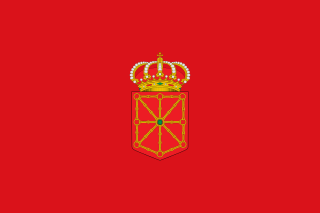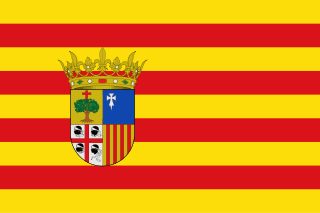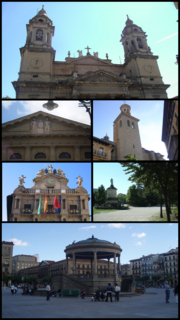
Alfonso I, called the Battler or the Warrior, was the king of Aragon and Pamplona from 1104 until his death in 1134. He was the second son of King Sancho Ramírez and successor of his brother Peter I. With his marriage to Urraca, queen regnant of Castile, León and Galicia, in 1109, he began to use, with some justification, the grandiose title Emperor of Spain, formerly employed by his father-in-law, Alfonso VI. Alfonso the Battler earned his sobriquet in the Reconquista. He won his greatest military successes in the middle Ebro, where he conquered Zaragoza in 1118 and took Ejea, Tudela, Calatayud, Borja, Tarazona, Daroca, and Monreal del Campo. He died in September 1134 after an unsuccessful battle with the Muslims at the Battle of Fraga.
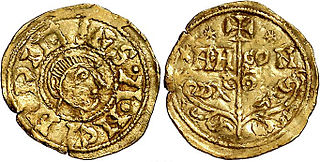
Sancho Ramírez was King of Aragon from 1063 until 1094 and King of Pamplona from 1076 under the name of Sancho V. He was the eldest son of Ramiro I and Ermesinda of Bigorre. His father was the first king of Aragon and an illegitimate son of Sancho III of Pamplona. He inherited the Aragonese crown from his father in 1063. Sancho Ramírez was chosen king of Pamplona by Navarrese noblemen after Sancho IV was murdered by his siblings.
Peter I was King of Aragon and also Pamplona from 1094 until his death in 1104. Peter was the eldest son of Sancho Ramírez, from whom he inherited the crowns of Aragon and Pamplona, and Isabella of Urgell. He was named in honour of Saint Peter, because of his father's special devotion to the Holy See, to which he had made his kingdom a vassal. Peter continued his father's close alliance with the Church and pursued his military thrust south against bordering Al-Andalus taifas with great success, allying with Rodrigo Díaz de Vivar, known as El Cid, the ruler of Valencia, against the Almoravids. According to the medieval Annales Compostellani Peter was "expert in war and daring in initiative", and one modern historian has remarked that "his grasp of the possibilities inherent in the age seems to have been faultless."
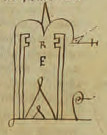
Ferdinand I, called the Great, was the Count of Castile from his uncle's death in 1029 and the King of León after defeating his brother-in-law in 1037. According to tradition, he was the first to have himself crowned Emperor of Spain (1056), and his heirs carried on the tradition. He was a younger son of Sancho III of Navarre and Muniadona of Castile, and by his father's will recognised the supremacy of his eldest brother, García Sánchez III of Navarre. While Ferdinand inaugurated the rule of the Navarrese Jiménez dynasty over western Spain, his rise to preeminence among the Christian rulers of the peninsula shifted the locus of power and culture westward after more than a century of Leonese decline. Nevertheless, "[t]he internal consolidation of the realm of León–Castilla under Fernando el Magno and [his queen] Sancha (1037–1065) is a history that remains to be researched and written."

John II, called the Great or the Faithless, was the King of Navarre through his wife from 1425 and the King of Aragon in his own right from 1458 until his death. He was the son of Ferdinand I and his wife Eleanor of Alburquerque. John was also King of Sicily from 1458-1468.

Tudela is a municipality in Spain, the second largest city of the autonomous community of Navarre and twice a former Latin bishopric. Its population is around 35,000. The city is sited in the Ebro valley. Fast trains running on two-track electrified railways serve the city and two freeways join close to it. Tudela is the capital of the Ribera Navarra, the agricultural region of lower Navarre and also the seat of the courts of its judicial district.

Theobald I, also called the Troubadour and the Posthumous, was Count of Champagne from birth and King of Navarre from 1234. He initiated the Barons' Crusade, was famous as a trouvère, and was the first Frenchman to rule Navarre.

Sancho VII called the Strong was King of Navarre from 1194 until his death in 1234. He was the son and heir of Sancho VI, whom he followed as the second king to hold the title of King of Navarre. Sancho VII was the first to use the chains of Navarre as his blazon, a symbol that later would become the main one of Navarre, and the last member of the Jiménez dynasty, which had ruled since the 9th century.

The Kingdom of Navarre, originally the Kingdom of Pamplona, was a Basque-based kingdom that occupied lands on either side of the western Pyrenees, alongside the Atlantic Ocean between present-day Spain and France.

John III was jure uxoris King of Navarre from 1484 until his death, as husband and co-ruler with Queen Catherine.

Philip III, called the Noble or the Wise, was King of Navarre from 1328 until his death. He was born a minor member of the French royal family but gained prominence when the Capetian main line went extinct, as he and his wife and cousin, Joan II of Navarre, acquired the Iberian kingdom and a number of French fiefs.
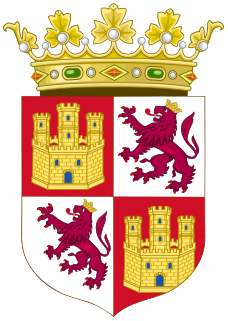
Eleanor of Navarre, was the regent of Navarre from 1455 to 1479, then briefly the queen regnant of Navarre in 1479. She was crowned on 28 January 1479 in Tudela.
Shem-Tob ben Isaac Shaprut of Tudela was a Spanish Jewish philosopher, physician, and polemicist. He is often confused with the physician Shem-Tob ben Isaac of Tortosa, who lived earlier. He may also be confused with another Ibn Shaprut, Hasdai Ibn Shaprut, who corresponded with the king of the Khazars in the 900's.

The Spanish conquest of the Iberian part of Navarre was initiated by Ferdinand II of Aragon and completed by his grandson and successor Charles V in a series of military campaigns lasting from 1512 to 1524. Ferdinand was both the king of Aragon and regent of Castile in 1512. When Pope Julius II declared a Holy League against France in late 1511, Navarre attempted to remain neutral. Ferdinand used this as an excuse to attack Navarre, conquering it while its potential protector, France, was beset by England, Venice, and Ferdinand's own Italian armies.
Hiyya al-Daudi was a prominent rabbi, composer, and poet of Andalusia.
The history of the Jews in Tudela, Spain goes back well over one thousand years.

Rotrou III, called the Great, was the Count of Perche and Mortagne from 1099. He was the son of Geoffrey II, Count of Perch, and Beatrix de Ramerupt, daughter of Hilduin IV, Count of Montdidier. He was a notable Crusader and a participant in the Reconquista in eastern Spain, even ruling the city of Tudela in Navarre from 1123 to 1131. He is commonly credited with introducing Arabian horses to the Perche, giving rise to the Percheron breed. By his creation of a monastery at La Trappe in memory of his wife, Matilda, daughter of Henry I of England, in 1122 he also laid the foundations of the later Trappists.

Fortún Garcés Cajal was a Navarro-Aragonese nobleman and statesman, perhaps "the greatest noble of Alfonso the Battler's reign". He was very wealthy in both land and money, and could raise two to three hundred knights for his retinue, funded both out of his treasury and enfeoffed on his lands.
John I, Count of Foix also known as Jean de Foix-Grailly was Count of Foix from 1428 until his death in 1436. He succeeded his mother Isabella, Countess of Foix. His father was Archambaud de Grailly.
